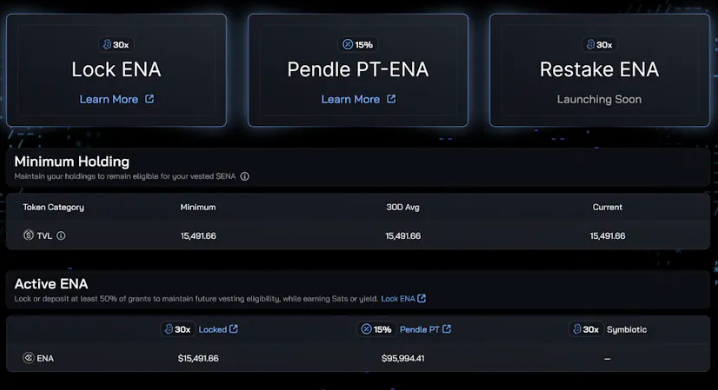Ethena updates ENA tokenomics with forced vesting and new use cases
New $ENA locking strategy aims to secure long-term ecosystem growth.

Share this article
Ethena Labs has announced a significant update to the tokenomics of its native token called ENA. Users receiving ENA through airdrops, such as from the Shard Campaign, must now lock at least 50% of their claimable tokens. The lock-in can be done through one of three methods: Ethena locking, PT-ENA on Pendle, or Symbiotic Restaking. Non-compliance will lead to the redistribution of unvested ENA to compliant users.
The announcement highlights that the update aims to shift ENA holders from short-term investors to those aligned with the ecosystem’s long-term vision. Notably, the instructions for the new requirements will be provided on June 23rd, when users claim their weekly ENA vest. The Ethena team emphasizes that none of the forfeited ENA will be retained by the foundation, team, or investors.
Ethena is also introducing staking capabilities for ENA, enhancing its utility within the ecosystem. Currently, ENA can be locked within Ethena for future rewards, in Pendle Finance in PT-ENA pools for a fixed APY, or used in generalized restaking pools to secure cross-chain transfers of USDe, the protocol’s stablecoin.

The new staking options are part of Ethena’s broader strategy to integrate $ENA into its financial infrastructure, including the upcoming Ethena Chain. The restaked ENA will provide security for cross-chain transfers verified through LayerZero’s DVN network. Additionally, ENA and sUSDe will be the first assets available for deposit in Symbiotic’s next epoch, with initial liquid staking tokens (LST) caps already filled.
Moreover, the roadmap shared by Ethena Labs underscores a focus on financial applications using USDe as the gas token. Restaked ENA will secure various applications and may be eligible for future airdrops from these protocols.
